Potato Fingerling French
starting at $16.10
Get Free Shipping in May with discount code SUNNY!
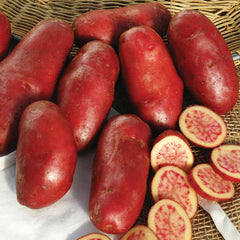
starting at $16.10
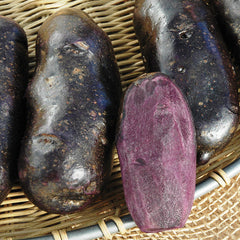
starting at $16.10
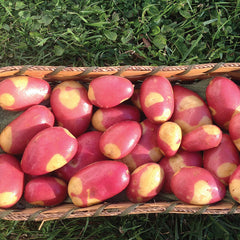
starting at $16.10
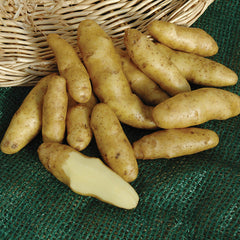
starting at $16.10
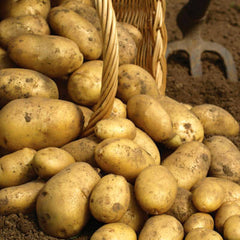
starting at $23.70
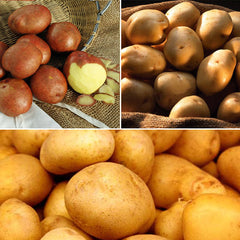
starting at $40.80
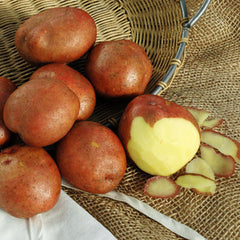
starting at $23.70
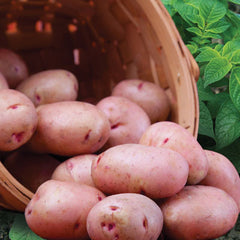
starting at $64.55
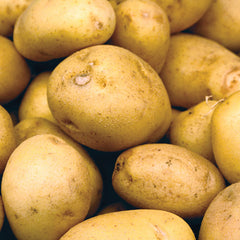
starting at $23.70

starting at $16.10

starting at $16.10

starting at $16.10

starting at $16.10

starting at $23.70

starting at $40.80

starting at $23.70

starting at $64.55
starting at $64.55
starting at $64.55

starting at $23.70
starting at $64.55
Potato / Onion Planting Guide
Potato / Onion Receiving Guide
How to Plant and Grow Seed Potatoes
You don’t need to have an expansive garden to plant and harvest fresh potatoes year after year. That’s one of the reasons so many gardeners consider potatoes some of their most essential crops. Seed potatoes are tubers that have been grown the previous season and stored through the winter.
You don’t need to have an expansive garden to plant and harvest fresh potatoes year after year. That’s one of the reasons so many gardeners consider potatoes some of their most essential crops. Seed potatoes are tubers that have been grown the previous season and stored through the winter.
For many growers, the answer boils down to how they plan to use their potatoes. Each potato variety is best-suited for at least one, if not several, eating purposes. For instance, Kennebec potatoes are multipurpose, meaning they can be used in plenty of recipes. Fingerling potatoes are often used for roasting but can also be boiled.
You need to put some measures into place to ensure that all the seed potatoes you buy are properly nurtured and nourished.
Pre-sprout your seed potatoes: Greensprouting or "chitting" breaks the dormancy of seed potatoes prior to planting and can lead to an earlier harvest. Place potatoes in a warm humid location for one to two weeks until the eyes start to sprout. Once the eyes have sprouted, move the potatoes back into a cool location (roughly 50°F) until you are ready to plant.
Grow in full sun: Potatoes require at least six hours of direct sunlight each day.
Plant before the last frost: Potatoes can tolerate cool soil and a moderate frost. They should be planted when the soil temperature reaches 50 degrees Fahrenheit, often as early as two to three weeks before the last frost.
Keep soil hydrated: Keep the soil moist throughout the growing season by entering regularly. Once the leaves turn yellow, stop watering so they can dry out completely before storage.
Cut seed potatoes to maximize crop: If you are panting seed potatoes, cut tubers into pieces about 1-2 inches in diameter with at least one "eye" per piece. Small tubers can be planted whole.
Prepare Your Soil: Seed potatoes need to have the right type of soil to grow correctly. Generally speaking, potatoes like well-drained soil with a pH between 5.8 and 6.5. Make sure the soil is loose and rich. Be sure to add organic matter like peat moss or compost as well as fertilizer to the soil before planting your seed potatoes in a sunny location. If your soil is drought-prone or sandy you can compensate for this issue by watering the soil more frequently. You may also want to work more organic matter into the soil prior to planting. Organic matter helps soil hold onto moisture longer rather than letting it drain out.
Look out for Scab-Prone and Blight-Prone Areas: In some cases, gardeners find that their potatoes grow with scabs or end up being too small. Scabs can result from many soil problems, such as the use of fresh manure or lime. If adding manure to your beds before planting, make sure you use properly aged manure and compost to reduce the risk of scab in your potatoes. Remember to rotate the type of crops you plant in your garden beds every year to help reduce the risk of disease and insect pressure. You may have to experiment with different types of soil preparation. Remember that you can always grow potatoes in barrels or potato patio planter bags to gain more control over your soil and moisture balance. Growing your potatoes in containers also makes harvest easier!
Be Careful Storing Your Seed Potatoes: Seed potatoes are shipped in early spring based on zip codes. Tubers can be stored for weeks in ideal conditions but are best planted quickly after you receive them. Do not allow your seed potatoes to freeze prior to planting. Tubers that freeze will start to rot quickly, making them unusable. Be sure to examine all stored seed potato tubers for signs of fungal growth. You can stop fungal growth on seed potatoes by giving them adequate ventilation in a cool and dry space.
Remember to follow the receiving care instructions to ensure a successful potato crop and for more in depth information read our potato guide.
At Harris Seeds, we sell some of the best potato tubers on the market. Browse our bestselling bulk seed potatoes and order them at your convenience.